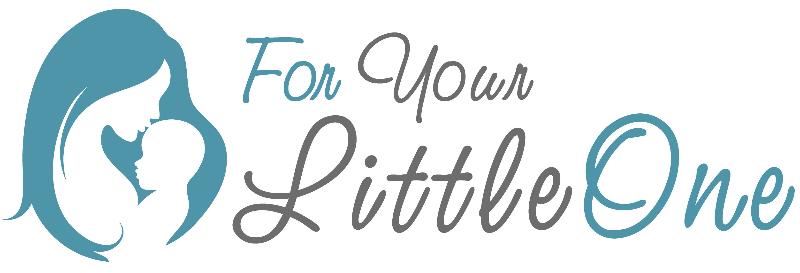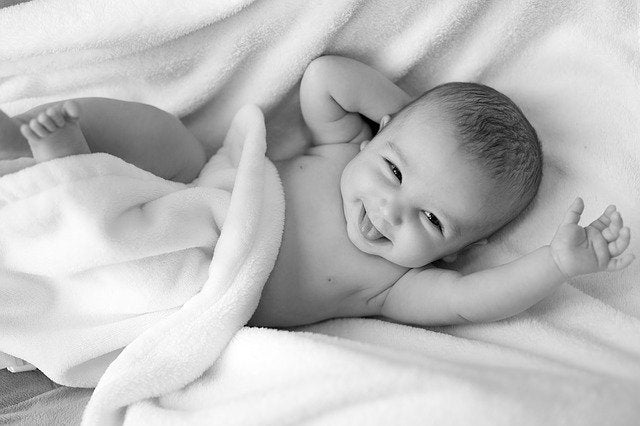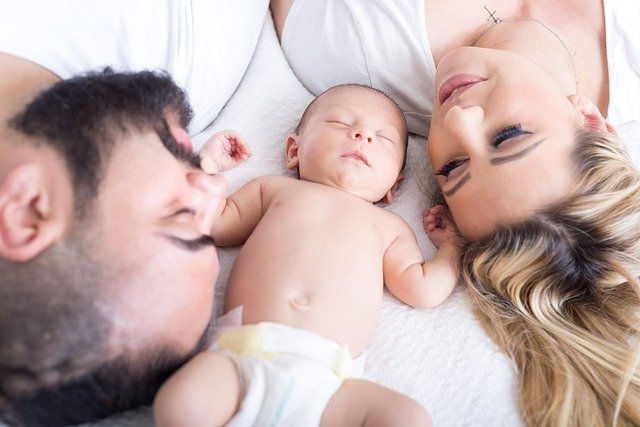Having a baby is always a learning curve for brand new parents, and even things that seem simple, such as putting baby down to sleep, can feel incredibly daunting when there's a little life at stake. It's normal to need some advice and reassurance about baby's bedtime. We're all aware of the risk of cot death and want to do everything in our power to prevent it. Many parents find themselves wondering if certain types of cots are safer than others and if newborns can sleep safely in Moses baskets. In this guide, we'll show you how to put baby in Moses basket in the safest possible way.
How to put baby in Moses basket
First of all, make sure the Moses basket is placed on a flat, sturdy surface. This might be the floor, a large and sturdy table, or on a compatible Moses basket stand. Ensure that the basket is not at risk of falling or tipping over. Then, fold back the hood of the Moses basket to give you comfortable access.
Here's how to put baby in Moses basket safely. They should be laid on their back in the feet to foot position. This is where their feet are positioned at the end of the Moses basket. Babies tend to wriggle around during sleep, and there's a risk that they could shift down underneath the blankets unless their feet are already placed up against the end of the basket. Babies' faces should never be covered by a blanket during sleep as this increases the risk of SIDs (sudden infant death syndrome).
Do babies need to be swaddled in a Moses basket?
Swaddling used to be the done thing when putting newborn babies down to sleep, but these days, it is not always a given. Swaddling is the process of gently wrapping baby up in a lightweight blanket so that their arms are tucked in.
There are pros and cons to swaddling. It is thought that the method could make babies feel more secure and therefore calmer for more restful sleep. Some parents feel that their little ones settle down to sleep more easily and sleep for longer when they are swaddled.
It is thought that swaddling could also reduce wakeups because the baby's arms and legs are tucked inside the blanket. Babies often flail their limbs during their sleep and this can startle them awake. By inhibiting this movement, babies might experience less disturbed sleep. Furthermore, it is thought that swaddling could help to reduce the risk of babies turning themselves over to the face-down position, which increases the risk of SIDs.
However, swaddling is not without risks. When babies are swaddled incorrectly - with the blankets positioned too high on the neck or wrapped too tightly - babies could be at increased risk of suffocation. They could overheat if too many blankets are used. They might be at risk of hip problems if swaddled too tightly. Furthermore, it is thought that swaddling could suppress baby's cry and this could make it difficult for parents to know when their little one is distressed and in need of a feed or nappy change.
Research has found that babies that are swaddled on a routine basis might have limited arousal pathways, which means they may not respond to stimuli normally. It seems as if they suckle less effectively and less frequently than babies that are not routinely swaddled.
More research is needed to understand exactly how swaddling impacts babies. It isn't clear whether it is overall less safe than simply covering baby in a blanket, with the blanket tucked beneath their arms, as is recommended by the NHS.
How to safely swaddle a baby
If you do choose to swaddle, it's important to know how to do it correctly. Use a thin, breathable material to swaddle your baby. This could be in the form of a cotton muslin, a baby blanket, or a specialist winged swaddle blanket. Make sure the swaddle does not go above the baby's shoulders. Their head and neck should be completely exposed.
Allow your baby's legs to fall into the natural position, which is with knees bent out like a frog. Do not swaddle them so tight that they cannot lie in this position. Their ability to kick and move their hips should not be inhibited.
Swaddling is only suitable for newborns. Once they show signs of being able to roll over, they're ready to transition away from swaddling.
Additional safety tips for putting baby to sleep
The prevalence of SIDs has reduced over recent years as we understand more about safe sleeping. First of all, it's important that babies don't get too hot as this increases the risk of SIDs. Never place your baby's Moses basket or cot close to a radiator or other heating device. It's usually unnecessary to keep the heating on all night; a temperature of around 18 degrees Celsius is ideal.
Check baby's temperature regularly to ensure they don't get too hot. Put your fingers on their tummy to see if it feels hot to the touch. If you notice them sweating, they probably have too much bedding. It's normal for their hands and feet to feel cool, so don't worry if you notice this. Don't use bedclothes or blankets in very warm weather, and never put extra clothes on babies to sleep in when they have a fever.
Sharing a bed with a baby, also known as co-sleeping, is not recommended by the NHS due to the risk of SIDs. You should also avoid sleeping with your baby on a sofa or in an armchair as this is linked with SIDs. Babies must always sleep in their own cot or Moses basket, or in a bedside crib.
Moses baskets are only suitable for newborns and shouldn't be used when babies exceed 6.8kg or once they can sit up without help. At this point, you should transition them into a cot. Check out our full range of high quality cot beds now in readiness for this next stage.
Approve and download Request rewrite


